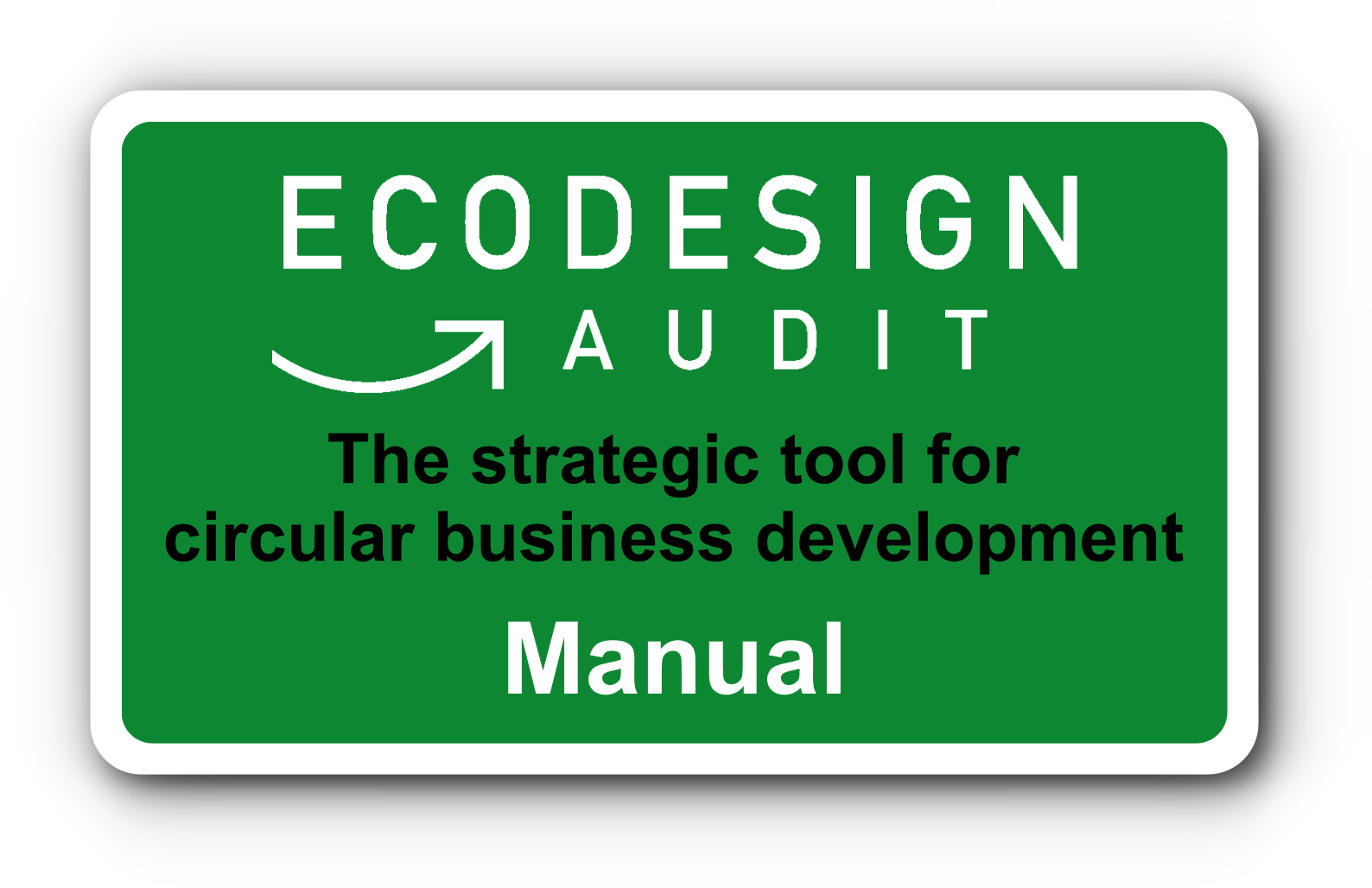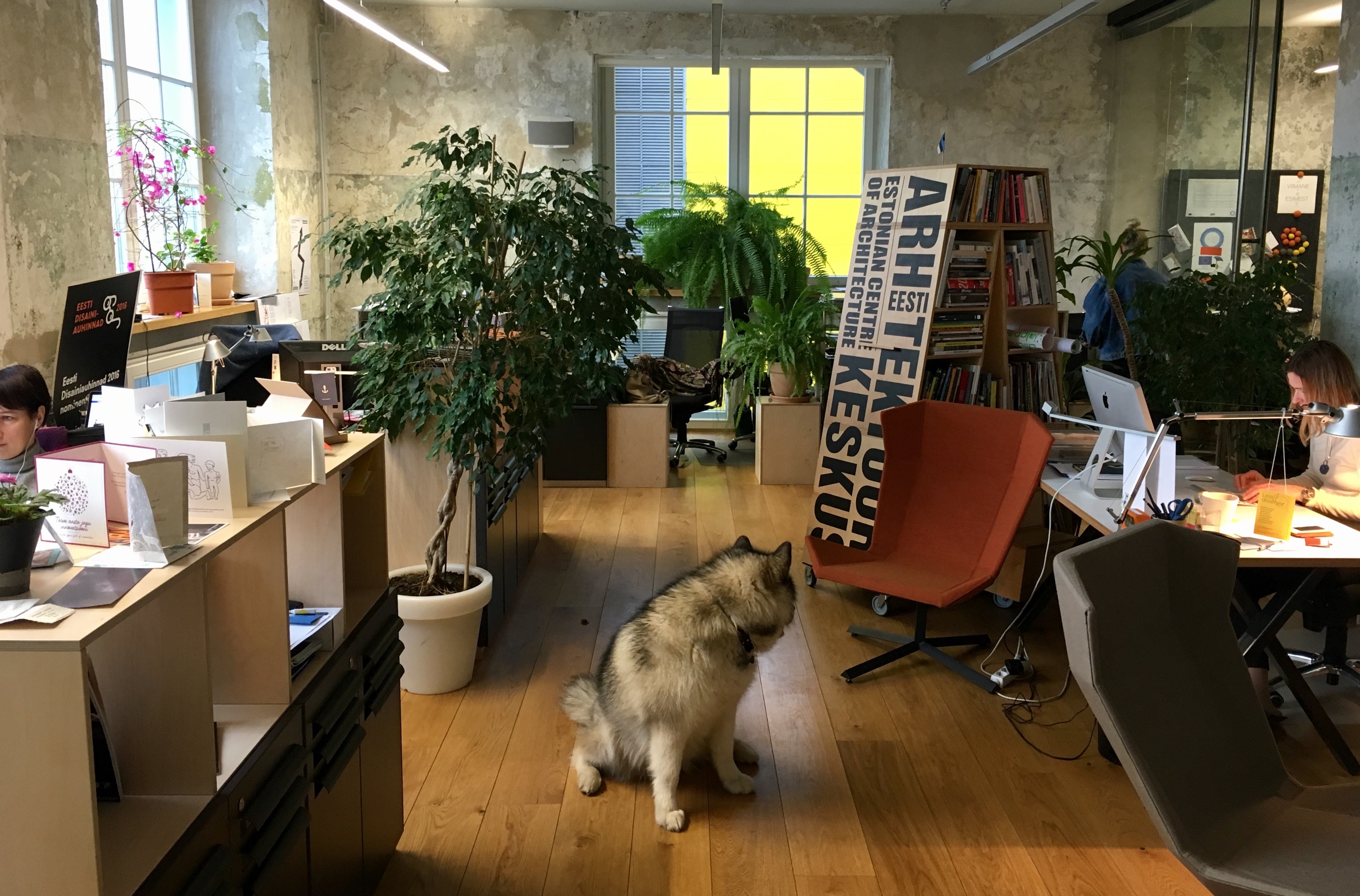-

WHAT IS IT?
EcoDesign Audit is a diagnostic tool for enterprises and public organisations to assess their ecodesign capabilities and performances and to identify possible circular design opportunities / approaches.
EcoDesign Audit is carried out by a design manager and/or an environmental specialist following the Ecodesign Audit Methodology. It provides a reliable, validated and comprehensive overview and gives clear recommendations in form of a report. The audit recommendations will help to establish a basis for moving forward towards a circular economy. A next step after the Audit assessment can be the Ecodesign Sprint.YOUR BENEFITS
» advises on alternative and additional measures and techniques you can adopt to improve and maximise your innovation and design capacities
» enhancement of design capabilities and identification of opportunities for ecodesign in accordance to a circular economy
» objective, external view to your enterprise / organisation
» valuable information for taking next steps or for choosing a long-term strategy
HOW DOES IT WORK?
Main data collection and analysis is carried out in the form of two separate assessments:
1. Organisational design capacity assessment
2. Circular design opportunity assessment
The objective of the design capacity assessment is to discover the (eco/circular) design capacity of the organisation – it determines the current design management processes and practices, strengths and weaknesses of the organisation’s and identifies ways to improve product design practice throughout the organisation.
The objective of the circular design assessment is to identify potential opportunities or approaches for improvement of product/service and business model of audited organisation according to circular economy principles. -

PILOT RUNS IN ESTONIA (2017)
In Estonia, we piloted the Audit in five companies. Although the enterprises differed in size, sector, awareness, knowledge and managerial capabilities, the same Audit methodology could be applied. In some of the companies we also involved along with an environmental specialist also designers and design managers to spread the knowledge and also to get a different view on the companies. "The awareness of ecodesign in companies can vary from black to white, you never know what you're getting into and there is as yet no 'standard'," said one of the experts, Markus Vihma from the Sustainable Design Lab at the Estonian Academy of Arts.
The number of “audited companies” isn't enough to generalise and draw conclusions, but we saw that the companies often don't see the relevance of ecodesign in reaching out to foreign markets or tend to think about it as a one-time label to cross the threshold. It is rarely discussed as an opportunity for strategic competitive advantage. "It's a pleasure to see that there are great low-cost opportunities still abundant that require the right idea, maturation & branding and the right targeting. It's not about buying the latest and the most expensive machinery," commented Markus Vihma.
CREATING A GREEN BRAND IMAGE FOR AN ESTONIAN CONCRETE MANUFACTURER
At the end of 2019, the concrete manufacturer Framm underwent a comprehensive circular design audit led by circular economy expert Harri Moora and service designer Kaarel Mikkin. The aim of the audit was to map the company’s situation at that point in time and find out which aspects of circular design could be applied at the various stages of the company’s life cycle.
Picture: Estonian Design Center
LESSONS LEARNT FROM FINLAND AND SWEDEN
In Finland and Sweden, EcoDesign Audit and Sprint were (mostly) applied in combination. It was assessed how these tools work in international context. However, it is important to note that Finland and Sweden are quite similar countries in terms of culture; thus, the workshops did not have significant differences. Therefore, it would be beneficial to assess the tool also in countries with higher cultural differences.
It was noted in the workshops that building trust was essential in order to create a suitable atmosphere for the co-creation of circular concepts. In EcoDesign Audit and Sprint, most participants meet for the first time in the workshop. They have three workshop days and one audit day to develop together two concepts through collaboration. Especially in an international setting, where participants have cultural and lingual differences, building a trustworthy environment and atmosphere is crucial. Hence, the methods employed in EcoDesign Audit and Sprint aim to tackle the challenges posed by discipline and cultural differences by facilitating collaboration and the creation of new ideas and concepts for the circular economy.
In Finland, the audit was conducted with the client company before the Sprint without the presence of the design agency. It was learnt that it would have been useful for the design agency to participate in the Audit in order to get a better understanding of the client’s situation right from the beginning. Therefore, the Audit was decided to be part of the Sprint days in the next sprints. -

ECODESIGN AUDIT MANUAL
Handbook created to introduce the EcoDesign methodological guidance material (EcoDesign Audit) by Estonian Design Centre in cooperation with sustainable design lab of Estonian Academy of Arts by Harri Moora and Markus Vihma.
Critical dimensions that are crucial for SMEs’ ability to successfully perform circular design:
- "existence of relevant strategy and planning"
- "leadership of the owners and/or the managers, especially in small companies (where it is difficult to create advanced and resource-demanding management systems as well as well-established business strategies)"
- "knowledge and skills (e.g. ability to analyse products life cycle impacts, gathering and analysing environmental information, assessment of future developments and risks, analysing policy and legal developments"
- "cooperation and partnerships with other actors. As SMEs cannot individually possess all the resources and capabilities needed to develop circular design and new products."

HOW CAN I INCREASE SUSTAINABILITY & CIRCULARITY IN MY BUSINESS?
Based on the EcoDesign Audit, the Berlin Institute for Innovation elaborated this scheme for SMEs for a first circularity assessment. -

Please be in contact if you have any questions.
Estonian Design Centre
Tiia Vihand
This email address is being protected from spambots. You need JavaScript enabled to view it.
+372 501 7310 -
EcoDesign Audit in practice
As part of the Circular Design HOW TO? Session #5 (June 2021), Harri Moora from the Stockholm Environment Institute Tallinn introduced experiences with the EcoDesign Audit Tool. (Watch min 27 - 47 in this video)


